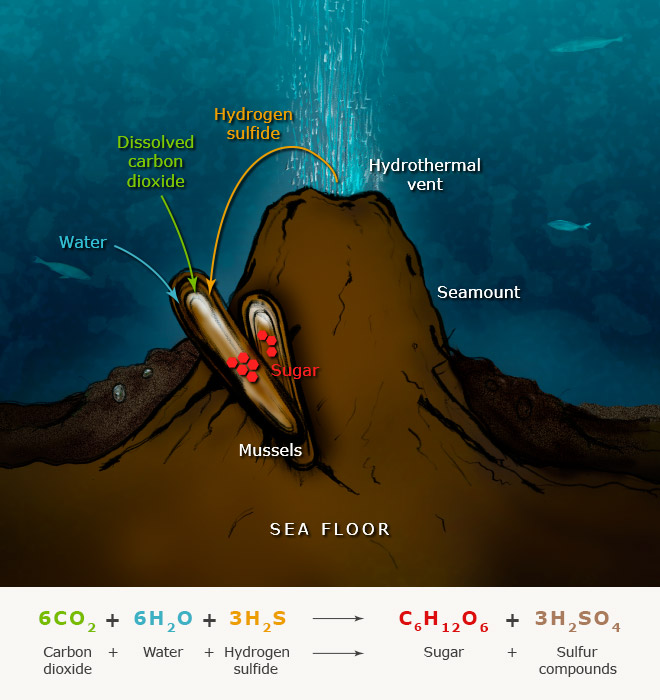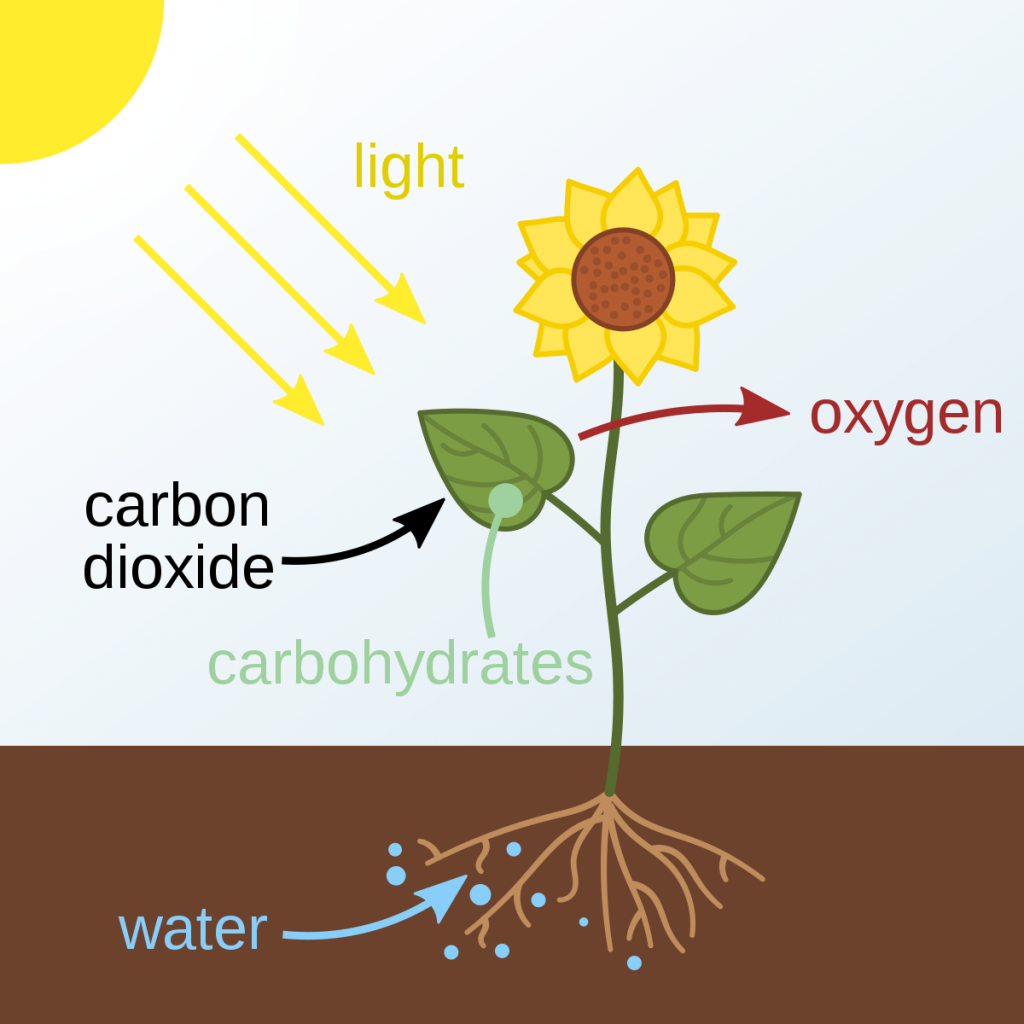Nutrition is a fundamental process through which organisms obtain nutrients from food, utilising them for energy, growth, and tissue repair. These nutrients are essential substances that support the proper functioning and maintenance of a living body, acting as a source of energy. However, not all living organisms acquire food in the same way. Plants and certain bacteria, equipped with the green pigment chlorophyll, have the remarkable ability to synthesise their own food through a process known as Photosynthesis. On the other hand, animals, fungi, and some bacteria rely on plants and other organisms for nourishment.
Two main Modes of Nutrition-
Table of Contents
Autotrophic Nutrition
Autotrophic Nutrition, derived from the Greek words “auto” meaning “self” and “trophe” meaning “nutrition,” refers to the mode of nutrition in which organisms produce their own food. They accomplish this by synthesising complex organic compounds from simple inorganic substances, such as carbon dioxide and water, in the presence of sunlight. Organisms capable of Autotrophic Nutrition are known as Autotrophs, and this mode of nutrition is called Autotrophic Nutrition.
Significance of Autotrophs
- Carbon Fixation- Autotrophs, especially plants, utilise Photosynthesis to convert carbon dioxide into sugar. They are often referred to as producers in ecosystems.
- Foundation of Energy Pyramids, Food Chains, and Food Webs- Autotrophs form the foundation of energy pyramids as they are the primary source of energy in ecosystems. They serve as the starting point of food chains and are vital in the formation of complex food webs.
- Fuel for Heterotrophs- Autotrophs serve as a source of fuel for heterotrophic organisms, including animals, fungi, and some bacteria. Heterotrophs rely on Autotrophs for their nutritional needs.
- Ecosystem Development- Autotrophs play a crucial role in the development and establishment of higher ecosystems. They create habitats and provide sustenance for other organisms.
- Origin of Life- Autotrophs are considered to be the first life forms that existed on Earth. Through their ability to produce their own food, Autotrophs paved the way for the evolution of heterotrophic organisms.
Also Check – What are the Differences between Autotrophic and Heterotrophic nutrition?
Types of Autotrophic Nutrition
Autotrophic Nutrition can be classified into two main types
Chemosynthesis
Chemosynthesis is a fascinating process employed by certain organisms, such as bacteria and specific species of algae, to produce organic molecules using chemical reactions instead of light energy. Unlike Photosynthesis, which relies on sunlight, chemosynthesis harnesses energy from exergonic chemical reactions, particularly in environments where sunlight is absent. These chemical reactions generate chemical energy when compounds, whether organic or inorganic, undergo oxidation. The energy obtained from these oxidation reactions is then trapped in ATP molecules, which serve as an energy currency within cells.

Chemotrophs
Chemosynthetic organisms, known as Chemotrophs utilise this chemical energy to assimilate carbon dioxide by combining it with hydrogen derived from sources other than water. Notably, this process does not result in the evolution of oxygen. Chemosynthesis plays a vital role in the recycling of essential nutrients like nitrogen, phosphorus, iron, and sulphur. Various types of chemosynthetic bacteria are responsible for these nutrient cycles, sustaining the growth and survival of organisms in different ecosystems.
Types of Chemotrophs with Examples
Sulphur Bacteria
Sulphur bacteria are a type of chemosynthetic bacteria that oxidise hydrogen sulphide (H2S) to produce energy. This process results in the formation of elemental sulphur (S) and water (H2O). Notable examples of sulphur bacteria include Beggiatoa, which converts hydrogen sulphide to sulphur, and Thiobacillus and Thiooxidans, which convert sulphur to sulphuric acid (H2SO4) and generate energy in the process.
Nitrifying Bacteria
Nitrifying bacteria obtain energy by oxidising nitrogenous compounds. This process occurs in two steps. First, Nitrosomonas and Nitrococcus convert ammonia (NH3) to nitrite (NO2-). The equation for this conversion is- NH4+ + 2O2 → NO2- + 2H2O + Energy. Then, Nitrobacter and Nitrocystis convert nitrite to nitrate (NO3-). The equation for this second conversion is- 2NO2- + O2 → 2NO3- + Energy. These conversions play a crucial role in the nitrogen cycle, allowing the recycling of nitrogenous compounds in ecosystems.
Iron Bacteria
Iron bacteria, such as Ferrobacillus ferrooxidans, carry out chemosynthesis by converting ferrous iron (Fe2+) to ferric iron (Fe3+). This process results in the formation of a rust-coloured, slimy deposit that can be observed coating stream beds. The equation for this conversion is- 4FeCO3 + 6H2O + O2 → 4Fe(OH)3 + 4CO2 + Energy.
Hydrogen Oxidising Bacteria
Hydrogen oxidising bacteria, like Hydrogenomonas, obtain energy by oxidising hydrogen gas (H2) and utilise carbon dioxide (CO2) to synthesise cellular materials. These bacteria play a crucial role in various environments, particularly those low in light but rich in compounds toxic to other organisms. Hydrogenomonas is also known as knallgas bacteria, as it oxidises hydrogen gas using oxygen as the final electron acceptor.
Methane Bacteria
Methane bacteria, known as methanogens, are capable of producing methane (CH4). They accomplish this by utilising carbon dioxide (CO2), hydrogen gas (H2), or small organic compounds such as acetate, formate, and methylamine. Examples of methanogens include Methanosarcina. These bacteria play a significant role in the carbon cycle, contributing to the production and consumption of methane in various environments.
These are just a few examples of the diverse range of chemotrophs and their specific modes of chemosynthetic nutrition. Chemosynthetic bacteria are crucial in various nutrient cycles, helping to sustain life in extreme environments such as deep-sea vents and hydrothermal vents.
Photosynthesis
Photosynthesis is a remarkable process in which organisms, especially plants, utilise the energy from sunlight to synthesise their own food. This process is essential for the production of carbohydrates, which serve as a source of energy and building blocks for the organism.

Phototrophs
Phototrophs are organisms that use light energy for the synthesis of food. Examples of photoAutotrophs include green plants, golden algae, diatoms, and cyanobacteria. These organisms utilise light energy to fix carbon dioxide into glucose and other organic compounds. Photosynthesis is responsible for providing approximately 99% of the energy required for life on Earth.
PhotoAutotrophic bacteria also perform Photosynthesis using specialised pigments. There are two types of Photosynthesis in bacteria-
- Oxygenic Photosynthesis- In oxygenic Photosynthesis, water is used as an electron donor, and oxygen is produced as a byproduct. Cyanobacteria are examples of organisms that perform oxygenic Photosynthesis.
- Anoxygenic Photosynthesis- Anoxygenic photosynthetic bacteria do not use water as an electron donor. Instead, they use alternative compounds like hydrogen sulphide, thiosulphate, hydrogen, or aliphatic compounds. These bacteria do not produce oxygen as a byproduct. Examples of bacteria performing anoxygenic Photosynthesis include green nonsulfur bacteria, green sulphur bacteria, purple nonsulfur bacteria, and purple sulphur bacteria.
Also Check – Where do Plants get each of the Raw Materials required for Photosynthesis
The equation for Photosynthesis is as follows-
6 CO2 + 6 H2O + sunlight energy → C6H12O6 (glucose) + 6 O2
Photosynthesis takes place primarily in the leaves of plants, often referred to as the “kitchen of the plant.” However, in some cases, Photosynthesis may occur in other plant parts such as stems. Glucose produced during Photosynthesis is often converted into starch and stored in various plant structures.
Also Check – Steps of Photosynthesis
Different parts of a plant are involved in the process of Photosynthesis
- Leaves- Leaves are considered the food factories of plants. They contain chloroplasts that receive sunlight and facilitate the photosynthetic process.
- Stomata- Stomata are small openings located on the surface of leaves and stems. They facilitate the exchange of gases, allowing carbon dioxide to enter the plant for Photosynthesis and oxygen, a byproduct of Photosynthesis, to exit.
- Roots- Roots absorb water and minerals from the soil and transport them to different parts of the plant, including the leaves, stems, and flowers.
Also Check – What are the Adaptations of leaf for Photosynthesis
Importance of Photosynthesis
- Conversion of Solar Energy- Photosynthesis converts solar energy into chemical energy stored in glucose and other carbohydrates.
- Production of Useful Products- Photosynthesis is responsible for the production of various essential products such as fodder, firewood, timber, drugs, fruits, and vegetables.
- Energy Storage- Through Photosynthesis, plants store energy in the form of carbohydrates, which they can utilise later.
- Carbon Dioxide Assimilation- Plants absorb carbon dioxide from the atmosphere and, with the help of sunlight and chlorophyll, convert it into carbohydrates.
- Producers in the Food Chain- Photosynthetic organisms, as producers, form the foundation of food chains by converting light energy into chemical energy stored in organic compounds.
- Oxygen Production- As a byproduct of Photosynthesis, oxygen is released into the atmosphere, providing a vital resource for other organisms’ respiration.
- Formation of Fossil Fuels- The photosynthetic activity of ancient organisms contributed to the formation of coal, petroleum, and natural gas over millions of years. Read more..

5 Comments on “Autotrophic Nutrition – Significance ,Types, Organisms and Examples”